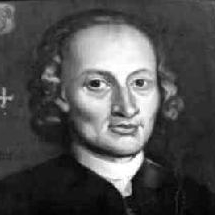
Baroque music shares with Renaissance music a heavy use of polyphony and counterpoint. However, its use of these techniques differs from Renaissance music. These stylistic differences mark the transition from the ricercars, fantasias, and canzonas of the Renaissance to the fugue, a defining baroque form. There are other, more general differences between baroque and Renaissance style. Baroque music was more often written for virtuoso singers and instrumentalists and is characteristically harder to perform than Renaissance music, although idiomatic instrumental writing was one of the most important innovations of the period. Baroque music employs a great deal of ornamentation, which was often improvised by the performer. Instruments came to play a greater part in baroque music, and a cappella vocal music receded in importance.

Different genres of the Baroque Music period include:
Vocal:
• Opera
Zarzuela
Opera seria
Opera comique
Opera-ballet
• Masque
• Oratorio
• Passion (music)
• Cantata
• Mass (music)
• Anthem
• Monody
• Chorale
Instrumental
• Concerto grosso
• Fugue
• Suite
Allemande
Courante
Sarabande
Gigue
Gavotte
Minuet
• Sonata
Sonata da camera
Sonata da chiesa
Trio sonata
• Partita
• Canzona
• Sinfonia
• Fantasia
• Ricercar
• Toccata
• Prelude
• Chaconne
• Passacaglia
• Chorale prelude
• Stylus fantasticus
Musically, the adoption of the figured bass represents a larger change in musical thinking namely that harmony. "Taking all of the parts together" was as important as the linear part of polyphony. Increasingly, polyphony and harmony were seen as two sides of the same idea, with harmonic progressions entering the notion of composing, as well as the use of the tritone as a dissonance.
Harmonic thinking had existed among particular composers in the previous era, notably Carlo Gesualdo; however the Renaissance is felt to give way to the Baroque at the point where it becomes the common vocabulary. Some historians of music point to the introduction of the seventh chord without preparation as being the key break with the past. This created the idea that chords, rather than notes, created the sense of closure, which is one of the fundamental ideas of what came to be known as tonality.
The middle Baroque, in music theory, is identified by the increasingly harmonic focus of musical practice and the creation of formal systems of teaching. Music was an art, and it came to be seen as one that should be taught in an orderly manner. This culminated in the later work of Johann Fux in systematizing counterpoint.
The forms which had begun to be established in the previous era flourished and were given wider range of diversity; concerto, suite, sonata, concerto grosso, oratorio, opera and ballet all saw a proliferation of national styles and structures. The overall form of pieces was generally simple, with repeated binary forms (AABB), simple three part forms (ABC), and rondeau forms being common. These schematics in turn influenced later composers.



